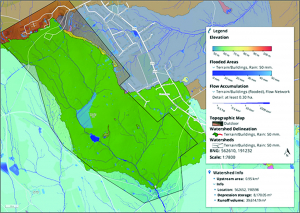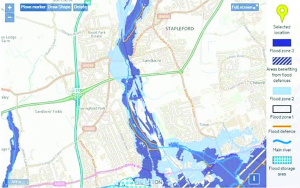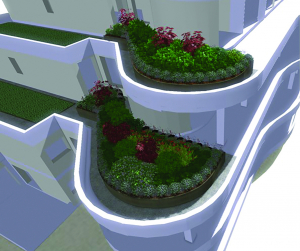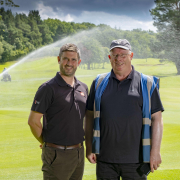For sustainability, meet the EPG
For sustainability, meet the EPG: Senior Environmental Consultant Dr Tom Young introduces the newest member of the STRI family, The Environmental Protection Group (EPG), and takes a closer look as to how the new partnership can help manage water at sports facilities.
The Environmental Protection Group (EPG), established in 1998, is a leading independent geo-environmental engineering design consultancy delivering cost-effective, sustainable designs focused in the areas of contaminated land remediation and gas protection, sustainable water management, flood risk assessment and structural waterproofing.

For sustainability, meet the EPG
STRI and EPG have been working closely with one another since 2010 when the two companies worked together on a number of London 2012 Olympics projects. It was formally announced in August 2020 that STRI and EPG had joined forces and EPG is now part of the STRI Group.
EPG has a huge amount of experience in water management plans, site-wide drainage schemes and sustainable water harvesting. Coupled with STRI’s agronomic, research and design capabilities, the Group now has the ability to further assist sports facilities. In particular, EPG has vast experience in designing Sustainable Drainage Systems (SuDS), which are now more commonplace and often required as part of any planning conditions. EPG was actually co-author of the CIRIA SuDS Manual, a key piece of industry guidance, which is the go-to document for any SuDS engineer.
Harvesting water from buildings
- STRI and EPG can accurately model and predict volumes of water that can be collected from buildings, which can be easily collected and stored for later reuse
- This solution can be ideal for small sports facilities that currently rely on mains water
- Water collected can easily be incorporated into a small-scale irrigation system with the pump station preferentially using collected rainwater before mains water
- In the example in
Figure 1, a small cricket club in London could potentially harvest nearly 270m3 a year from their clubhouse roof and 400m3 a year from the club car park. This could potentially reduce the club’s mains water requirements by 20-50%. The design of the storage tank is critical in these situations; in order to provide a cost effect solution, but to also be large enough to take advantage of large storm events
Harvesting water from whole sites
- STRI and EPG can also produce much larger water models for whole sites. This allows us to predict:
a) how much water falls across an whole site and when
b) where this water ends up
c) how much of this water can be transported and stored for later reuse - This detailed approach is very much cutting edge, with STRI and EPG optimising hydraulic models based on experience from other sectors and making them appropriate for sports turf situations
- Key issues to consider include detailed analysis of site drainage systems, rootzone composition, = effect of vegetation on runoff and effect of climate change on future rainfall events
- In the case study shown in Figure 2, STRI and EPG were able to accurately model the entire drainage network of an 18-hole golf course
- It was found that an average volume of 3750m3 a month was potentially available for the club once local topographical issues, losses in ground infiltration and inherent water capture by
vegetation were taken into account - With a current demand of 10,000m3 a month, water harvested from the course easily accommodates all the club’s irrigation demand, and also allows the club to seriously look into the addition of fairway irrigation
- Runoff from the winter when demand is low can be stored to create a surplus of water for the summer when the irrigation demands are at their peak. Therefore, the club would require a reservoir largeenough to not only meet demand throughout the year but also to build up surpluses during the winter
- The club is now looking into the concept in more detail, with STRI and EPG supporting with detailed designs, reservoir sizing and help with Environment Agency permission
Flood risk Assessments/ mitigating effects of flooding
- In some situations, flooding of certain areas of buildings is problematic and STRI and EPG are required to design sites to accommodate water from elsewhere
- EPG is very experienced in running detailed Flood Risk Assessments (FRA) for sites and then designing solutions if flooding is predicted
- In Figure 3, a site was predicted to undergo serious flooding on a regular basis. EPG was able to mitigate against this by designing the site to accommodate water elsewhere. This was achieved by a simple depression across the site that could accommodate additional flood water (Figure 4)

Figure 4a & 4b
Green/Blue roofs
- The runoff from most new buildings needs to be slowed down in order to reduce the amount and speed of runoff from the building. This can be achieved via the use of rainwater storage tanks as shown in Figure 1. However, sometimes it is more appropriate to store the water on the roofs of buildings (for example in more built up areas or when excavation for tanks is expensive). This can also be combined with vegetation of a roof. Known as Blue (storage of water), Green (vegetation) or Blue-Green (water storage with vegetation) roofs, this method can really improve the look as well as environmental credentials of most buildings
- In the example given in Figure 5, STRI and EPG were tasked with reducing the runoff from the roof of a new building, whilst storing the water for later reuse in irrigating large planters placed on the roof to provide screening for the building
- The innovative design stored water across the entire roof level in a shallow modular tank (85mmdeep) which was located across the entire roof slab removing the need to have a large storage tank located in the development boundary. Each roof on the building is connected so once one tank is full, it cascades into the one below
- Underneath the planters, subsurface irrigation ‘wicks’ were installed to passively wick water from the shallow storage area into the rootzone above. This provides sufficient water for the plants to survive, whilst reducing the need for potable water across the site
- The design allowed the site engineers to save significant amounts of money by removing an entire large soakaway tank (50m x 4m x 2m)
These examples only demonstrate a small amount of the joint expertise that the two companies have now combined. If you are interested in any of the problem-solving methods discussed, please get in contact with Tom Young at tom.young@strigroup.com
Reproduced from the STRI Bulletin, September 2020, with thanks.























